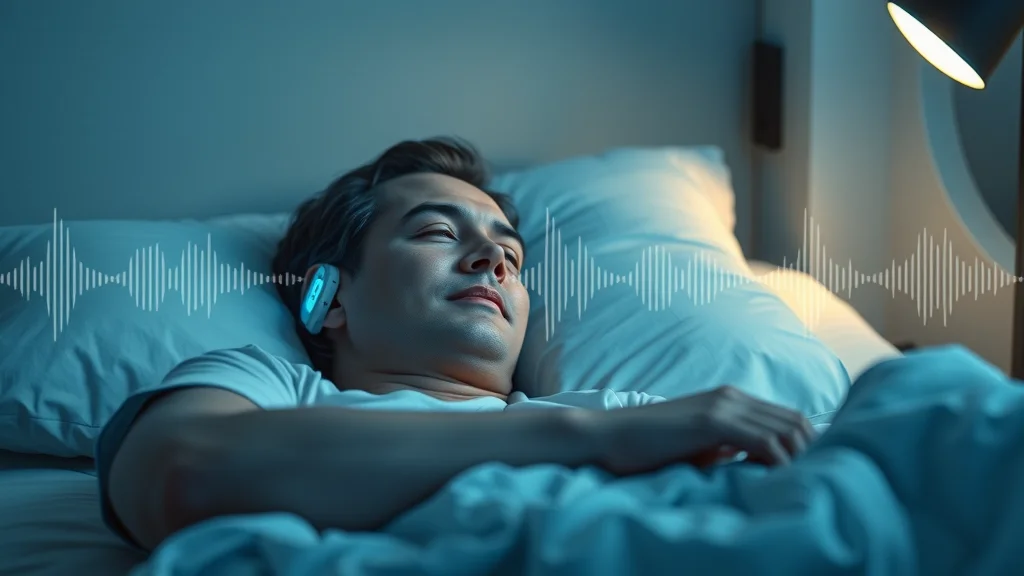Ever wake up drained, as if your body never truly rested? It’s a frustrating struggle many silently face daily. If every morning feels like you’re fighting your way out of a fog, the hidden culprit could be your sleep cycles. Understanding your sleep cycles is the key to breaking free from that zombie feeling, reclaiming lost energy, and starting your day focused and refreshed.
Learn how understanding sleep cycles can help reclaim your mornings
"Understanding your sleep cycles may be the single most important step to waking up refreshed instead of fatigued every day."

Ever Wonder Why Sleep Cycles Leave You Drained?
If you’re consistently groggy in the morning, the answer might not be just about how long you sleep, but how well your sleep cycles are structured. Sleep isn’t a single, uniform state. Throughout the night, you go through multiple sleep cycles, each featuring different sleep stages and sleep phases that directly affect your energy upon waking. Sometimes, waking during the wrong sleep cycle or skipping deep and REM sleep can make you feel even worse, regardless of how many hours you spent in bed.
Many people misunderstand how sleep cycles work; they assume a solid 8 hours is all that’s needed. But the science shows that the timing and quality of each cycle has a profound effect on your alertness, mood, cognitive function, and even physical health. By dissecting what happens during each sleep cycle and learning how to optimize your schedule, you can transform restless nights into powerful, restorative sleep—and stop waking up in zombie-mode, once and for all.
What You'll Learn About Sleep Cycles in This Guide
How sleep cycles affect morning energy
The science behind each sleep cycle, sleep phase, and sleep stage
Tips for optimizing your sleep stages
How to apply sleep science for better rest
Understanding Sleep Cycles: The Essential Science
What Is a Sleep Cycle?
A sleep cycle describes the predictable, repeating pattern your brain and body follow each night. On average, one sleep cycle lasts 90 to 120 minutes and consists of several distinct sleep stages: light NREM sleep, deeper NREM stages, and REM (Rapid Eye Movement) sleep. As you sleep, you typically complete 4-6 full cycles before waking up. Each cycle progresses through these sleep phases, with REM and deep sleep playing unique roles in recovery, memory, and healing.
While the structure of sleep cycles stays consistent, the percentage of time your body spends in each sleep stage changes as the night progresses. Early cycles feature more deep sleep for physical restoration, while later cycles are richer in REM sleep—crucial for learning, creativity, and regulating emotions. Missing or interrupting cycles, especially deep or REM sleep, often leaves you feeling unrested and contributes to that “zombie” sensation in the morning.

Sleep Cycle vs. Sleep Phases and Sleep Stages
The terms sleep cycle, sleep phase, and sleep stage are often used interchangeably, but they mean different things. A single sleep cycle contains multiple sleep stages. These stages can be grouped into two sleep phases: NREM (Non-Rapid Eye Movement) sleep, and REM (Rapid Eye Movement) sleep. Each sleep stage within these phases serves a special purpose, such as deep recovery for your brain and body, memory consolidation, or emotional processing.
Where a sleep cycle refers to the entire loop through NREM and REM, the phases break down the periods of light, deep, and REM sleep, and the stages detail what’s happening physically and mentally. Understanding these finer details can help you spot patterns that disturb your restorative sleep—crucial when figuring out how to finally stop waking up exhausted.
For those looking to further support restorative sleep, incorporating healthy lifestyle habits can make a significant difference. Simple changes—like gentle evening movement or mindful breathing—may help reinforce your natural sleep cycles. If you’re interested in practical ways to enhance your nightly rest, explore these evidence-based exercises that support better sleep and overall wellness.
Key Terminology: Sleep Stage, Sleep Phases, and Sleep Cycles
Sleep stage: Refers to the particular level of brain and body activity (NREM 1, 2, 3, REM).
Sleep phase: A group of stages (NREM or REM) representing changes in your body’s physiological processes.
Sleep cycle: The full, repeating loop through all the stages from NREM 1 to REM.
"Sleep cycles involve distinct sleep stages, and each stage serves a unique, vital role in physical and mental recovery." – Sleep Expert
Stages of Sleep: A Deep Dive into Each Sleep Stage
Explaining the Five Sleep Stages
The five main stages of sleep—commonly described in modern science as four NREM stages (N1, N2, N3) and one REM stage—unfold sequentially in each sleep cycle.
- N1: Light sleep, marking the transition from wakefulness.
- N2: Onset of true sleep, body temperature and heart rate drop, brain waves become slower.
- N3: Deep sleep (delta wave sleep), the most restorative for the body, vital for immune system and tissue repair.
- REM: The REM stage is where most dreams occur. Characterized by rapid eye movement, increased brain activity, and vivid dreams, it refreshes the mind, memory, and creativity.
These stages each have distinct brain wave patterns and biological purposes. If you’re missing out on deep stages (N3) or REM sleep because of interruptions or late bedtimes, you’re likely to feel rundown mentally and physically.
The time spent in each stage of sleep (especially REM and N3 deep sleep) changes over the night. Early cycles include more deep wave sleep, vital for growth and repair, while later cycles favor more REM. This rhythm is why waking up during or right after deep sleep often leaves you feeling especially groggy and disoriented.
How Sleep Stages Progress Throughout the Night
In a typical night, your sleep architecture evolves: you cycle from light (N1) into deep (N3), then into REM, repeating the process roughly every 90 minutes. The first cycles are deep-sleep dominant, providing crucial renewal for the body, immune system, and cellular repair. The latter cycles allow extended REM periods, consolidating memories and helping you wake up mentally sharp.
As the night advances, REM periods increase while deep sleep lessens—one reason why sleeping enough total hours and timing your wake-up to coincide with lighter sleep stages makes a huge difference in how you feel. Disruptions (like sleep apnea or late-night technology use) may throw this natural rhythm off, resulting in fewer complete sleep cycles and less time in these vital sleep stages.

Stages of Sleep – Characteristics, Duration, and Purpose
Stage |
Duration/Cycle |
Key Features |
Main Purpose |
|---|---|---|---|
N1 (Light Sleep) |
5-10 min |
Transition from wakefulness, slow eye movements, slight muscle relaxation |
Prepares body & brain for deeper sleep |
N2 (Light Sleep) |
20-25 min |
Lowered heart rate, body temperature drops, sleep spindles in brainwaves |
Protects sleep, processes memories |
N3 (Deep Sleep) |
20-40 min |
Delta waves, hardest to wake, tissue repair, hormone release |
Physical restoration & immune support |
REM (Rapid Eye Movement) |
10-60 min (longest in morning) |
Vivid dreams, rapid eye movement, increased brain activity |
Mental & emotional recovery, learning |
REM Sleep Cycle and Rapid Eye Movement Explained
What Is REM Cycle?
The REM cycle is a crucial phase in your sleep cycle, characterized by rapid eye movement that defines this unique and vital stage of sleep. Typically, REM sleep starts about 90 minutes after falling asleep, and each REM period stretches longer as the night progresses. During the REM stage, your brain activity closely mimics wakefulness, with rapid eye movement, irregular heart rate and breathing, and temporary muscle paralysis to prevent acting out dreams.
The REM cycle is crucial because it’s when your subconscious processes emotions, cements new memories, and resets mental energy. Missing REM often leads to irritability, memory lapses, and that mental “fog” many associate with a bad night's sleep. If your sleep is too brief or disturbed, REM cycles are among the first stages to be cut short, robbing you of peak mental function.
The Role of Rapid Eye Movement in Sleep
A defining characteristic of REM sleep is the rapid eye movement that occurs beneath closed eyelids during this vital sleep stage. This phase is vital for cognitive resilience, emotional balance, and learning. During REM, brain waves quicken, closely resembling wakefulness, and the vivid dreams you remember occur. Evidence indicates REM sleep fuels creativity and problem-solving, as well as emotional processing—helping you handle stress, make decisions, and remain adaptable the next day.
REM also aids restoration by increasing heart and breathing rates, stimulating brain regions essential for learning and memory, and helping recalibrate hormones that influence your mood and appetite. Skipping out on quality REM sleep isn’t just fatiguing; it can amplify anxiety, stress, and impair your ability to focus sharply.
REM Stage vs. Non-REM Sleep Stages
REM stage differs fundamentally from NREM (Non-REM) sleep stages. While NREM (stages N1-N3) prioritizes physical recovery—repairing cells, releasing growth hormone, and bolstering the immune system—REM supports the brain’s “mental housekeeping.” Each has distinct brainwave patterns (delta waves in deep NREM versus fast, mixed waves in REM), heart rate, and even body temperature changes across the night. Sometimes, if you wake during REM, you may feel overly drowsy or disoriented, due to the vivid dream state you were just in.
"REM sleep cycles are essential for memory, creativity, and emotional resilience."

Deep Sleep, Sleep Cycles, and Physical Restoration
The Deep Sleep Stage: Why It Matters
Deep sleep, often called the N3 stage or delta wave sleep, is essential for physical restoration and boosting the immune system during your sleep cycles. During this stage of sleep, muscle growth accelerates, tissues heal, and growth hormone surges. Deep sleep is when the brain “cleans house”—removing waste, strengthening immune system functions, and supporting repairs. Missing this stage is what makes you feel like a true zombie: unfocused, physically depleted, and more prone to illness.
Children and teens typically get more deep sleep as it supports physical development. As adults age, total deep sleep time can decline, which makes maintaining quality sleep cycles even more important to stay healthy and refreshed. Interrupting deep sleep, even if you get enough hours overall, can sabotage energy, skin health, and your body’s ability to bounce back from stress.
How the Deep Sleep Stage Helps Brain and Body
During deep sleep, growth hormone release ramps up, fueling tissue repair, muscle recovery, and immune system responses. Your heart rate and body temperature hit their nightly lows, reducing blood pressure and inflammation. This calm, steady state allows your brain to reorganize neural connections and strengthen memories.
Growth hormone release during deep sleep
Tissue repair and immune system support
Why missing deep sleep makes you feel like a zombie
Deep sleep is where the real “reset” happens. Skimping on deep sleep leads to higher stress, poor mood, and stubborn fatigue—even after a full night in bed. So, if you’re constantly waking up tired, focus first on deep sleep optimization.

How Sleep Apnea and Sleep Disorders Disrupt Sleep Cycles
Common Sleep Disorders: Sleep Apnea, Insomnia, and Others
Millions suffer from sleep disorders such as sleep apnea, insomnia, restless leg syndrome, and circadian rhythm disruptions, all of which can severely disrupt healthy sleep cycles. Sleep apnea, a prevalent sleep disorder, causes repeated breathing interruptions that often break deep sleep and REM sleep cycles, reducing overall sleep quality. Insomnia makes it difficult to fall asleep or stay asleep, reducing total restorative sleep time. Other conditions can prevent your body from completing the necessary cycles for mental and physical health.
Recognizing the symptoms—frequent waking, loud snoring, persistent fatigue, or difficulty concentrating—can help you seek timely help and prevent the vicious cycle of chronic exhaustion and cumulative health risks associated with disordered sleep.
The Impact of Sleep Disorders on Sleep Stages and Cycles
Sleep disorders disrupt the natural progression of sleep cycles, reducing time spent in restorative deep sleep and REM sleep stages. For instance, with untreated sleep apnea, your airway collapses repeatedly, causing drops in oxygen and micro-awakenings, which break apart the stages of sleep. This keeps you stuck in lighter sleep and prevents the transition into restorative deep and REM stages.
Ultimately, continued cycle disruption impairs healing, memory, and immune system support. If you suspect a sleep disorder, consult a healthcare provider or sleep specialist. Restoring healthy sleep cycles can make a dramatic difference in how you feel daily.

How Eye Movement and Brain Activity Reveal Sleep Quality
What Is Rapid Eye Movement Sleep?
Rapid eye movement (REM) sleep is a distinctive sleep stage within the sleep cycle, marked by rapid eye movement and increased brain activity essential for mental restoration. This stage features heightened brain activity, similar to being awake, but your body is mostly paralyzed—a built-in safety mechanism against acting out dreams. Scientists use eye movement as a simple, visible marker of brain activity that sets REM apart from deep NREM sleep.
REM is when your mind is most active, dreaming intensifies, and neurotransmitters are replenished. Monitoring eye movement and associated brainwaves, such as theta and beta waves, enables researchers and sleep trackers to assess your sleep quality and the amount of restorative sleep you get each night.
Measuring Eye Movement and Brainwaves in Each Sleep Cycle
Polysomnography, a comprehensive sleep test, measures eye movement (via EOG), brain activity (EEG), heart rate, and muscle tone to differentiate between stages of sleep. Portable sleep trackers and smartwatches can now estimate these patterns, helping you track time spent in each phase: lighter (N1-N2), deep (N3), and REM.
By observing the intensity and frequency of brain wave changes—slow delta waves dominate deep sleep, faster mixed-frequency waves appear in REM—experts can determine how many complete cycles you achieve and whether interruptions are impairing your rest.
Correlation Between Eye Movement and Dreaming
Intense and frequent eye movement during REM correlates with vivid, memorable dreams. As you enter and maintain REM, the brain becomes almost as active as when you’re awake. These dream-heavy phases are important for memory consolidation, creativity, and processing emotions. If REM periods are short or frequently interrupted, you may have fewer or less memorable dreams—and potentially diminished emotional well-being or learning capacity.
The Ideal Sleep Cycle: Duration, Timing, and Optimization
How Long Is a Sleep Cycle?
On average, a sleep cycle lasts 90 to 120 minutes. Over a healthy night, most adults complete four to six cycles. The proportion of NREM to REM sleep shifts from early to late cycles—a pattern that supports both physical restoration and mental recovery. Key markers like stable heart rate, consistent breathing, and the progression of eye movement all indicate healthy sleep architecture.
Waking naturally at the conclusion of a sleep cycle, especially after REM or lighter NREM sleep, often means feeling refreshed instead of groggy. Using smart technology or a sleep journal to track your sleep cycles and sleep stages can help you optimize your bedtime and wake-up routines for better rest and alertness.
Optimizing Sleep Phases for Restorative Sleep
Optimizing your sleep cycles means aligning your routine with natural circadian rhythms and reducing disruptions such as caffeine, stress, and light exposure before bedtime to enhance deep sleep and REM stages. Simple tactics can enhance your deep and REM sleep: regular bedtimes, a dark, cool bedroom, and mindful pre-sleep habits. Smart alarms that sync with your sleep stage can help you awaken at the right cycle, reducing morning grogginess.
Over time, even small improvements—like avoiding late-night screen exposure, tweaking room lighting, or adjusting exercise timing—can add up to more consistent, restorative sleep cycles, leading to energized mornings and better long-term health.

Breaking Down the 10-3-2-1-0 Rule for Healthy Sleep
What Is the 10-3-2-1-0 Rule?
The 10-3-2-1-0 rule is a scientifically supported bedtime routine designed to optimize your sleep cycles, including deep sleep and REM sleep, helping you wake up feeling fully rested
10 hours before bed: Cut out caffeine.
3 hours: Finish all food and alcohol.
2 hours: End all work, emails, and stressful conversations.
1 hour: Power down all screens (TV, phones, tablets).
0: Number of times you hit snooze in the morning.
By following these intervals, you minimize disruptions to your natural sleep cycles and maximize time spent in deep and REM stages. This routine supports healthy hormone cycles, body temperature rhythms, and prepares your nervous system for true rest.
How This Rule Aligns with Sleep Stages and Sleep Cycles
Each part of the 10-3-2-1-0 rule addresses a specific disruptor of healthy sleep cycles. Caffeine lingers in your system and can block deep sleep; eating or drinking close to bed raises body temperature, impacting NREM recovery; late-night stress and screens keep your brain in high gear, decreasing both REM and deep sleep. By creating a buffer between these habits and your desired bedtime, you optimize your natural progression through the stages of sleep—maximizing physical, mental, and emotional restoration, all night long.
How to Practice Better Sleep Hygiene for Healthy Sleep Cycles
Lifestyle Habits That Enhance Each Sleep Stage
Sleep hygiene includes lifestyle habits that support healthy sleep cycles and significantly improve overall sleep quality, especially by enhancing deep sleep and REM sleep stages. This includes practices such as keeping a regular bedtime, avoiding heavy meals or exercise close to sleep, and minimizing light and sound in your bedroom. Blackout curtains, a comfortable mattress, and a reliable pre-sleep routine (like reading or gentle stretches) can dramatically improve your sleep quality.
Limiting caffeine and screen exposure at night directly supports deeper sleep by aligning the body’s natural circadian rhythm and facilitating smooth progression through the sleep cycles—especially the all-important REM and deep sleep stages.
Top Evidence-Based Tips for Improved Sleep Hygiene
Consistent sleep schedules (even on weekends)
Limiting screen time before bed
Managing stress for better sleep cycling
Studies show that a predictable sleep-wake routine reinforces circadian cues, making it easier to fall asleep and achieve quality, restorative sleep cycles. Mindfulness, meditation, and even light-strength exercise in the evening help prime the body for sleep, allowing each sleep stage to run its course uninterrupted.

Lists: Do’s and Don’ts for Supporting Healthy Sleep Cycles
Do: Keep a regular bedtime
Don’t: Consume caffeine late in the day
Do: Create a cool, dark, quiet environment
Don’t: Ignore signs of potential sleep disorders
People Also Ask: Essential Questions About Sleep Cycles
Do we sleep in 90 minute cycles?
Yes—most adults experience sleep cycles lasting 90-120 minutes each. Within this period, you’ll rotate through light and deep NREM sleep and REM stages. Getting multiple uninterrupted cycles each night is vital for complete physical and mental restoration. Waking during the wrong stage (like deep NREM) can leave you especially groggy.
What is the ideal sleep cycle?
Ideal sleep cycles are 90-120 minutes, with 4-6 completed each night. This allows your body to move through all the restorative sleep stages—ensuring both brain and body recovery. An ideal night is when you wake up naturally, after a full cycle, preferably following a REM stage.
What are the 5 stages of sleep cycles?
The five stages of sleep (sometimes grouped as four in modern classification) include N1 (drowsy, light sleep), N2 (true sleep), N3 (deep sleep, aka delta wave sleep), and REM sleep. These stages repeat throughout the night, with the balance shifting from more deep sleep early on to longer REM periods closer to morning.
What is the 10 3 2 1 0 rule for sleep?
The 10-3-2-1-0 rule is a five-step guideline for preparing your mind and body for optimal sleep cycles: avoid caffeine 10 hours before bed, stop eating/drinking 3 hours before, stop work 2 hours before, shut off screens an hour before bedtime, and don’t hit snooze when you wake up. Following this rule can help maximize deep and REM sleep stages for truly restorative rest.
Answers to Top Sleep Cycle Questions
These routines and definitions help you optimize sleep quality by protecting all stages of sleep. Track your sleep, follow the best habits, and consult a care provider if sleep doesn’t improve or you notice symptoms of a sleep disorder. Full, uninterrupted sleep cycles are the key to waking up energized and alert.
FAQs: Sleep Cycles, Disorders, and Optimization
How many sleep cycles should I get each night?
Most adults need 4 to 6 full sleep cycles per night, totaling about 7-9 hours, to feel fully restored.Can you make up for lost sleep cycles?
You can recover some deficits by sleeping more the following night, but consistently skipping sleep cycles can create a “sleep debt” that’s hard to completely erase.What disrupts sleep cycles the most?
Sleep disorders, irregular schedules, caffeine, alcohol, and light pollution are top disruptors.How to know if your sleep cycle is healthy?
Waking up refreshed, having consistent energy through the day, and minimal middle-of-the-night awakenings are good signs. If not, consider tracking your sleep and consulting a care provider.

Key Takeaways: How to End Your Zombie Mornings by Mastering Sleep Cycles
Every night consists of several sleep cycles, each critical for body and mind
REM cycle and deep sleep are restorative stages
Optimizing sleep habits can break the cycle of groggy awakenings
Summary and Next Steps for Improving Sleep Cycles
"Small adjustments to your routine can transform your sleep cycles and mornings."
Track your sleep stages and patterns
Apply the science-backed tips discussed
Consult a healthcare professional if you suspect a sleep disorder
If you’re ready to take your wellness journey even further, consider how holistic health practices can complement your sleep improvements. From nutrition to stress management, every aspect of your lifestyle plays a role in how well you rest and recover.
For a deeper dive into natural ways to boost your overall well-being, discover the wide-ranging health benefits of aloe vera and how it supports a balanced, restorative lifestyle. Embracing a comprehensive approach can help you unlock not just better sleep, but a more vibrant, energized you.
Ready to Wake Refreshed? See Science-Backed Sleep Tools.
Explore top-rated sleep trackers, smart alarms, and expert-recommended resources to start building healthier, more restorative sleep cycles tonight. Your best, most energized mornings begin here.
 Add Row
Add Row  Add
Add 




Write A Comment